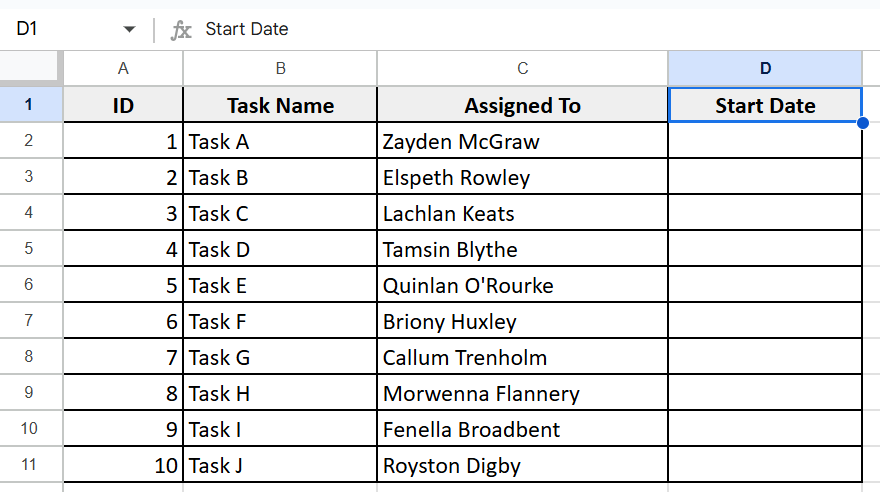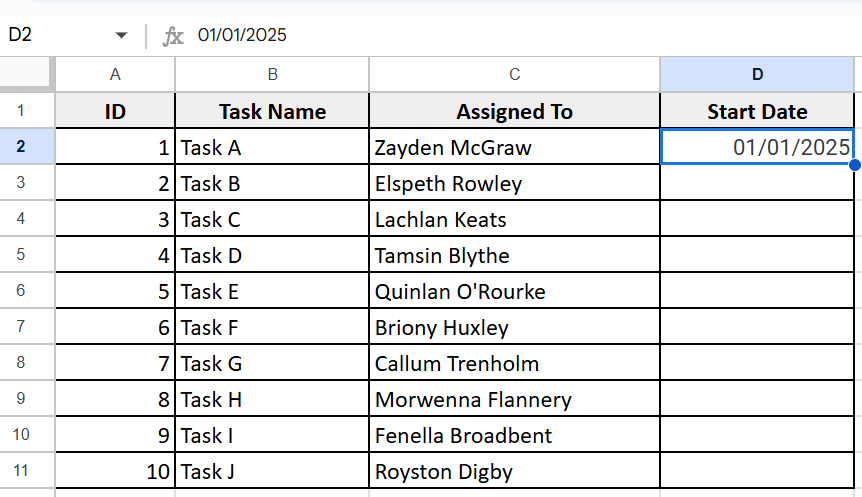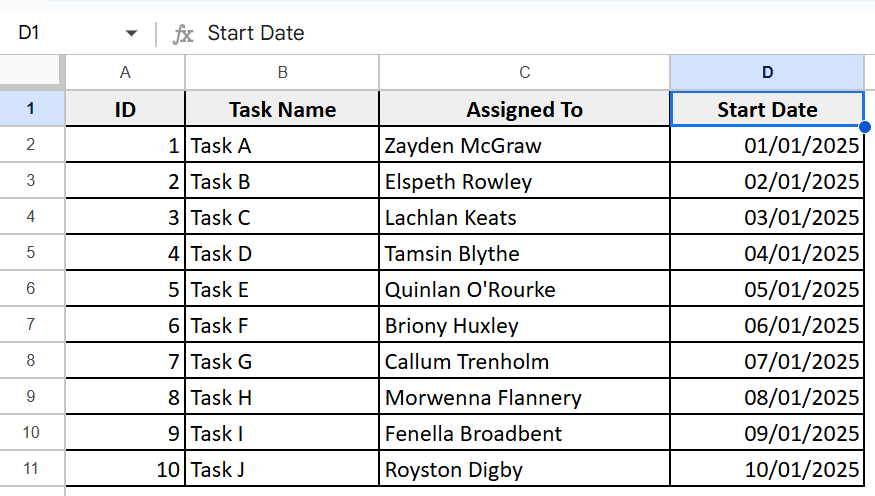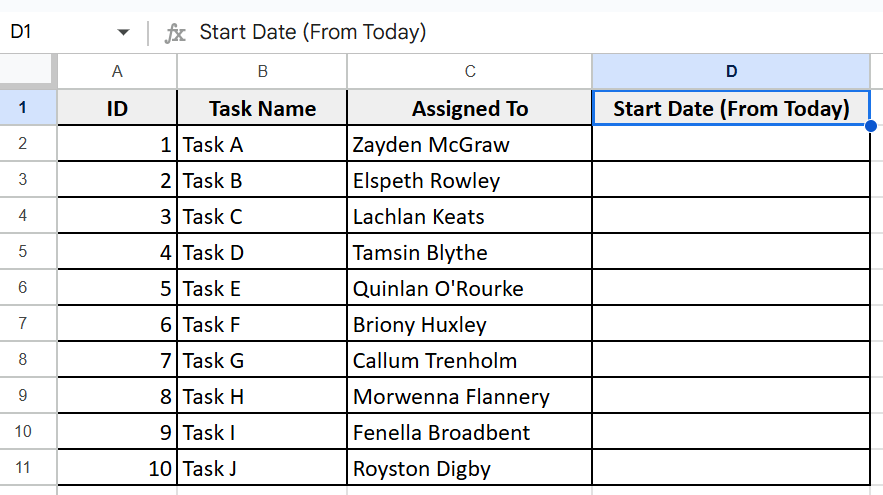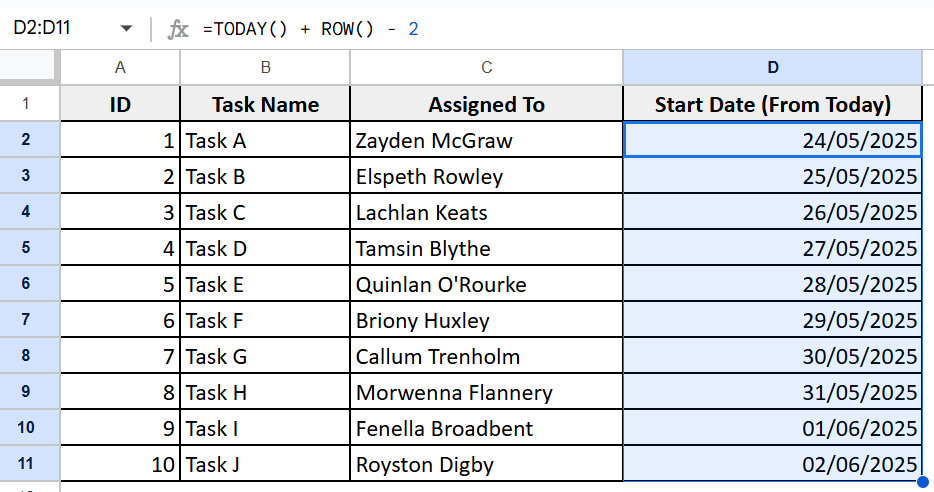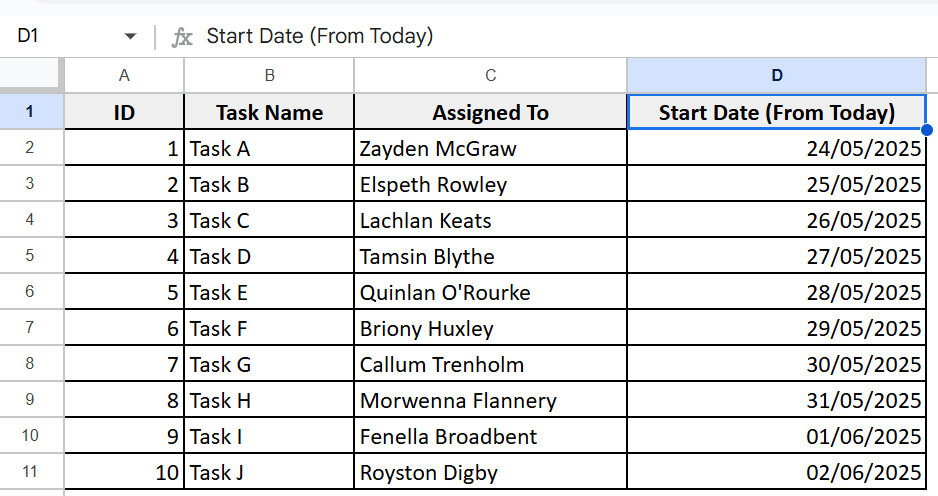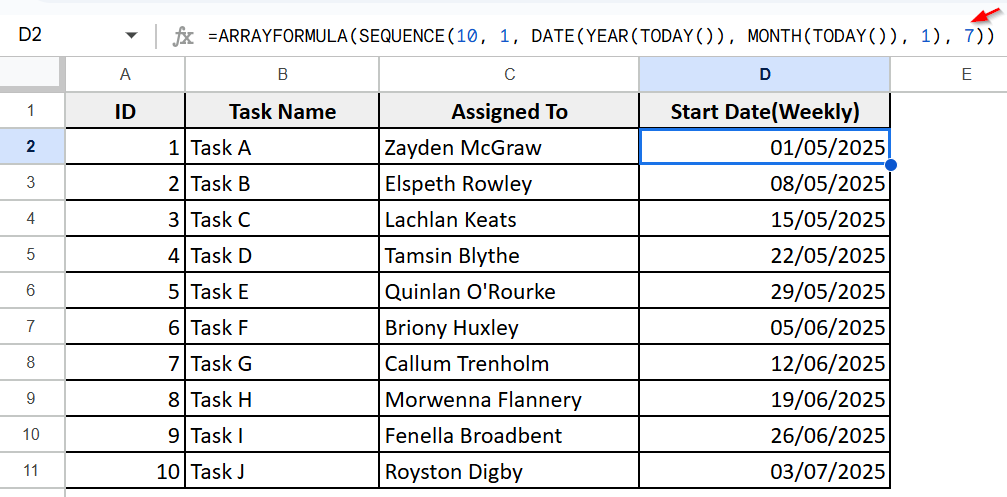Google Sheets offers several smart ways to handle and automate date entries. Whether you want to fill in sequential dates , generate weekly entries, or use dynamic functions. Google Sheets has built-in tools, functions, and formulas to make the process simple. This article provides you with the most effective methods to add dates in Google Sheets automatically.
Steps to add dates automatically using fill handle:
➤ Insert a new column to the right of Assigned To and name it Start Date.
➤ In column D2, type a starting date(01/01/2025).
➤ Drag it from D2 to D11 to fill the range (D2:D11).
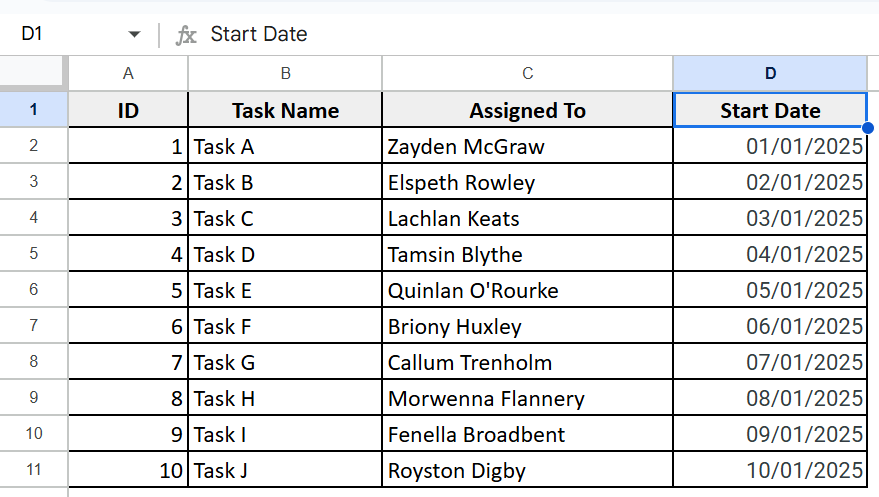
In this article, we will explore multiple practical methods to add dates automatically in Google Sheets. We will use techniques like dragging down the fill handle for sequential dates, the powerful SEQUENCE function to generate date lists, dynamic date functions such as TODAY and WORKDAY that update automatically, and formulas for automatic weekly interval entry.
Use Drag Down Fill for Sequential Dates
When you just need a simple list of daily dates, Google Sheets’ drag-to-fill feature is the easiest option. This method requires no formulas and is ideal for quick, manual entries.
Steps:
➤ Insert a new column to the right of Assigned To and name it Start Date.
➤ In column D2, type a starting date(01/01/2025).
➤ Drag it from D2 to D11 to fill the range (D2:D11).
➤ It will return sequential dates.
Use SEQUENCE Function with ARRAYFORMULA to Generate Dates
The SEQUENCE function is a powerful tool which allows you to generate a sequence of numbers automatically. When you combine the SEQUENCE function with ARRAYFORMULA you can dynamically generate a list of dates. It is especially useful for schedules, calendars, or when dealing with large datasets.
Steps:
➤ Insert a new column to the right of Assigned To and name it Start Date.
➤ Enter the following formula
=ARRAYFORMULA(DATE(2025,1,1) + SEQUENCE(10, 1, 0, 1))
➤ It will fill automatically with sequential dates.
Using Dynamic Dates Functions
To automatically update dates, Google Sheets has built-in functions. The function TODAY returns the current date. ROW returns the row number of the cell where the formula is used. By combining these two functions, you can create a dynamic list of dates that start from today. These are best for templates, dashboards, or documents that rely on real-time date values.
Start Dates Based on Today’s Date (Dynamic)
➤ Insert a new column to the right of Assigned To and name it Start Date (From Today).
➤ Enter the following formula:
=TODAY() + ROW() – 2
➤ Drag it from D2 to D11 to fill the range (D2:D11).
➤ It will return dates from today.
➧ ROW(): This returns the row number of the cell where the formula is located.
➧ - 2: Here is the formula in D2 (which is row 2). So, 2 is deducted from the combined result of TODAY() and ROW().
➧ Overall, the formula gives today's date plus the row number minus 2.
Start Dates for Weekdays Only (Skip Weekends)
➤ Select column D and name Start Date(Weekly)
➤ In column D2 enter the formula
=WORKDAY(TODAY(), ROW() – 2)
➤ It will return only on weekdays, excluding weekends.
➧ TODAY(): This returns the current date.
➧ ROW(): This returns the row number of the cell where the formula is located.
➧ - 2: Here is the formula in D2 (which is row 2). So, 2 is deducted from the combined result of TODAY() and ROW().
Functions for Automatic Date Entry (Weekly Intervals)
You can quickly make a list of dates that are one week apart by using spreadsheet functions like ARRAYFORMULA and SEQUENCE. By using these with DATE and TODAY functions, you can start the list from the first day of this month and can keep adding dates every week automatically. Use this function if you want to automatically fill a column with weekly dates, such as for weekly meetings, tasks, or reports. It saves time and ensures consistency.
Steps:
➤ Select cell D2 and name Start Date(Weekly)
➤ Paste the following formula:
=ARRAYFORMULA(SEQUENCE(10, 1, DATE(YEAR(TODAY()), MONTH(TODAY()), 1), 7))
➤ Press Enter.
➤ The column will now return 10 weekly dates, starting from the first of the current month, spaced 7 days apart.
Frequently Asked Questions
Can I automatically update dates based on another cell value?
Yes, you can reference another cell inside your data formula. Like = A2 + 7
What if I want to generate monthly dates?
Use the EDATE function: =ARRAYFORMULA(EDATE(DATE(2024,1,1),ROW(A1:A10)-1))
Can I generate dates without typing each one manually?
Yes. Use formulas like =TODAY() + ROW() – 2, SEQUENCE(), or WORKDAY() to automatically generate date series.
Wrapping Up
Automatically adding dates in Google Sheets helps save time and avoid error. This article covered easy methods using functions to create dynamic date lists. These techniques keep your schedules and tasks up to date effortlessly.

